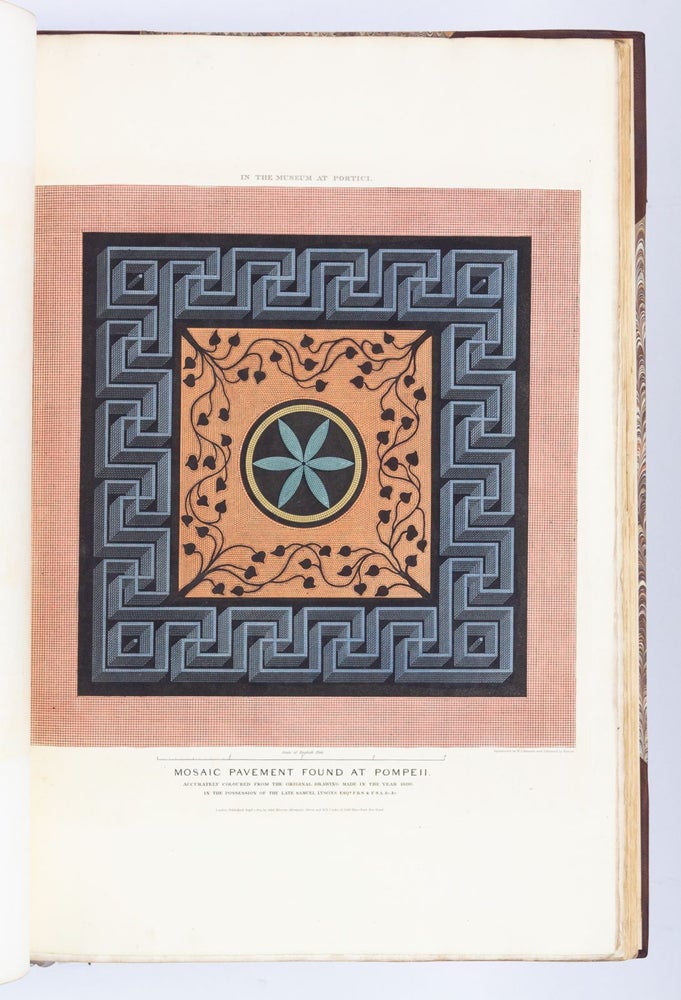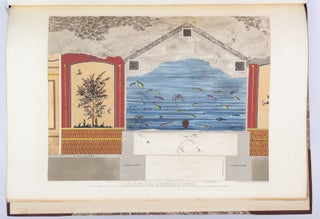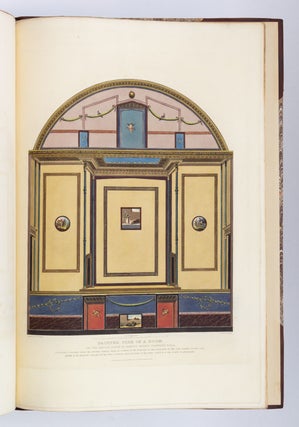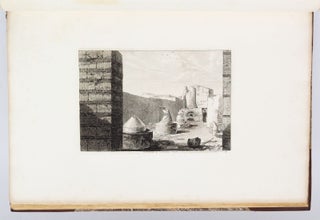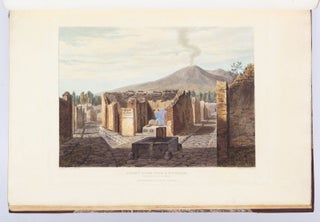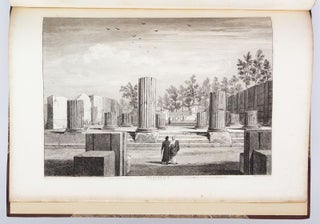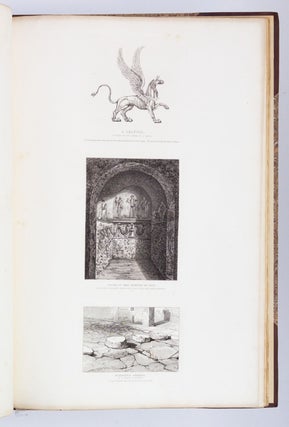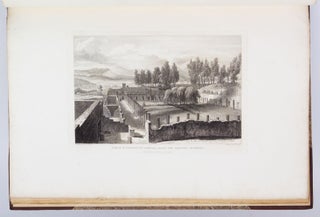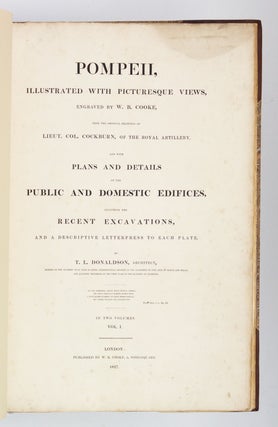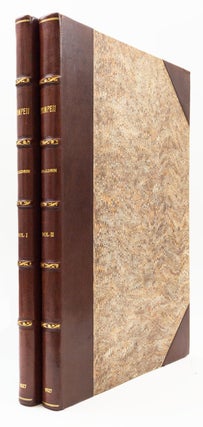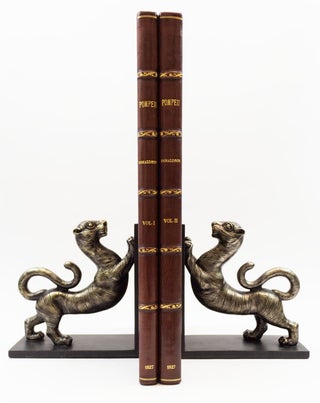POMPEII, ILLUSTRATED WITH PICTURESQUE VIEWS.
(London: W. B. Cooke, 1827). 566 x 385 mm. (22 3/8 x 15 1/8"). Two volumes. FIRST EDITION.
Attractive modern brown half morocco over marbled boards, raised bands with gilt design, gilt lettering. With six engraved vignettes, and 80 ENGRAVED PLATES AND PLANS (five hand-colored, one double-page), some with more than one illustration on each plate, original tissue guards. A Large Paper Copy. Brunet II, 116 ("This beautiful work is in the same format at Stuart's 'Antiquities of Athens'"); Graesse II, 207. See also: Benezit III, 1167. ◆Bindings with negligible imperfections, essentially as new. Light stain to top corner of title in volume I, contents with light, scattered, and mostly marginal foxing, fore edge margins occasionally lightly toned or with light thumb smudges, but on the whole an excellent copy, the foxing never severe, the plates overall very clean, the margins notably wide, and in handsome newer bindings.
Coinciding with a renewed fascination in the West regarding the ancient world, this vast, profusely illustrated set details the architectural delights of Pompeii "as the eye of the traveller will now behold them [in 1827]," inviting viewers to experience the fabled city at a time when it was still half buried and its mysteries only partially unearthed. Based on drawings by watercolorist James P. Cockburn (1779-1847), a well-known artist specializing in travel books, the plates show a variety of civic and residential architecture that had previously been excavated, including the great Amphitheatre, the Temple of Isis, and the Grand Forum. Travellers in 19th century dress can often be seen mingling in the foreground of these scenic views, highlighting Pompeii's relatively new status as a tourist spot, while the smoldering Mount Vesuvius occasionally looms in the distance--a sobering reminder of Pompeii's calamitous past and the volcano's ever-present danger. The plates also depict important cultural and artistic artifacts as well as charming details that offer a glimpse into daily life before the city's annihilation, such as stone inscriptions, the contents of private homes, and even the arrangement of stepping stones on one of the streets. Of particular note are the five lovely hand-colored illustrations that bring to life Pompeii's famous mosaic work, painted murals, and bath house interiors, as well as plans showing the progress of excavations in Pompeii, which had begun in earnest during the mid-18th century. The text here was provided by the highly regarded architect Thomas Leverton Donaldson (1795-1885), who is best known as the founder of the Institute of British Architects. DNB calls him "a pioneer in the academic study of architecture" and notes that "in 1879 the prince of Wales had called him 'the father of the institute and of the profession.'" This work is not common: RBH lists just four copies at auction in this century. (ST17496-012)
Price: $3,900.00

